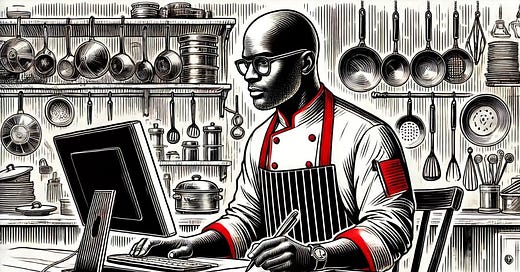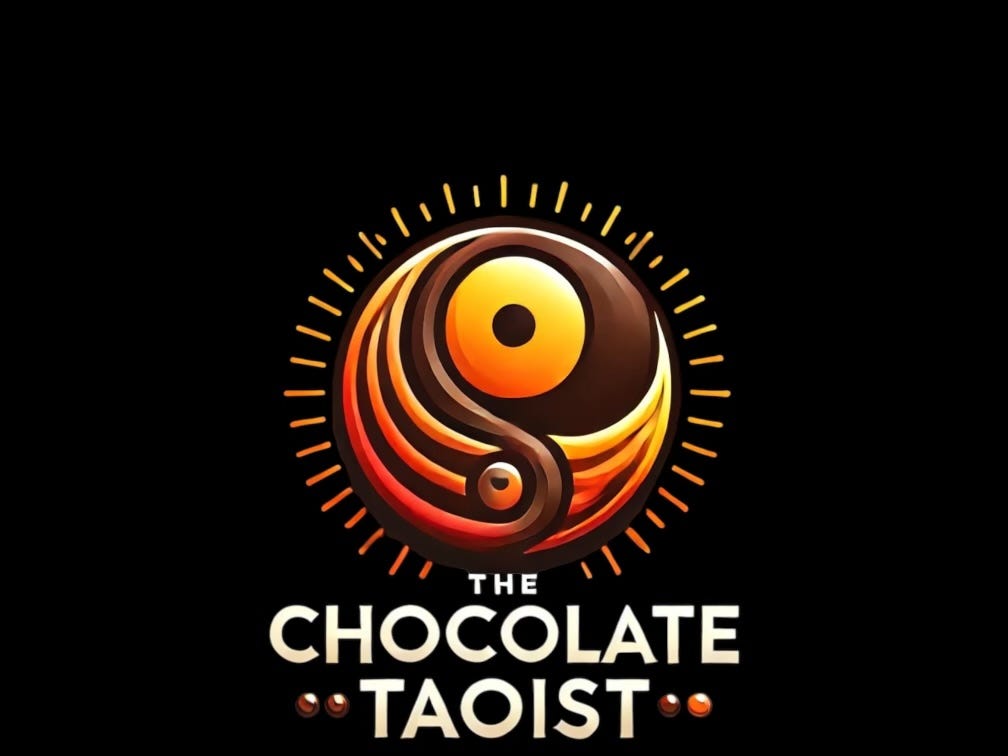Mise en place isn’t just for the pros—it’s a game-changer for anyone who wants to dominate their kitchen. This powerful practice puts you in control, making sure you’ve got everything locked and loaded at your station.
Stay sharp, stay efficient, and eliminate the chaos. With everything prepped and in place, you’re not just cooking—you’re running your kitchen like a well-oiled machine, avoiding slip-ups, and crushing it every step of the way.
So let’s talk for a minute about routines.
People love to ask about them, as if some secret, sacred formula exists for churning out brilliance. Sure, I have a routine. It’s unconventional, a bit irreverent, and I borrowed it from the heat and chaos of restaurant kitchens.
But let’s be clear — it’s not a rigid ritual. It’s a Taoist dance with chaos, not some checklist for ticking off achievements.
At 4:00 a.m., while most people are clutching their pillows, I wake up and dive into my own version of “mise-en-place,” that French culinary concept about getting your ingredients in place before cooking. If you think writing has nothing to do with preparing a gourmet meal, think again. “Flow with whatever may happen, and let your mind be free,” the Taoist sage Zhuangzi once said, and I think he was talking about my writing process, too.
Chefs in the world’s top kitchens use mise-en-place to prep their dishes, keep their stations clean, and maintain their sanity under fire. In a way, they’re practicing Taoism without even knowing it—moving effortlessly in a chaotic environment, creating something extraordinary out of disorder.
Dan Charnas wrote a book about it called “Work Clean,” and it inspired me to throw out the rule book and start crafting my own system. But unlike the chefs, I’m not just cooking up food—I’m serving stories.
Preparation — Where the Tao Unfolds
Before I write, I get everything in order. Not because I’m some productivity freak, but because chaos without a framework is just… chaos. Zhuangzi reminds us, “A path is made by walking on it.”
So before I start, I lay out my ingredients: story ideas, loose structures, rough outlines. This isn’t about control—it’s about creating space for spontaneity. My goal is to let the words flow like water, but even water needs a riverbank to guide its course.
Process — Writing Without Writing
This is where the magic happens, but if you think it’s some Zen-like trance of perfect focus, think again. It’s a battle. The kitchen’s on fire, the orders are coming in fast, and I’m just trying to keep up.
Ninety minutes—that’s all it usually takes to spit out 800-1,200 words. And like Lao Tzu said, “A journey of a thousand miles begins with a single step.” One step, then another, and soon enough, the page is full. This isn’t about perfection; it’s about presence. When I write, I write. Nothing else.
Presence — The Clean-Up Act
Once the storm has passed, I enter the final stage: editing. Like a chef adding the final garnish, I refine and polish the piece. It’s not about obsessing over every word, but letting the work breathe.
Lao Tzu nailed it when he said, “Nature does not hurry, yet everything is accomplished.” The article’s cooked, but now it needs that last touch—cleaning, trimming, and making it presentable before I share it with the world.
Breaking the Rules
The thing about systems, whether in the kitchen or in writing, is that they’re not meant to be followed religiously. They're a starting point. A Taoist approach means you flow with the rhythm, bending when necessary, and breaking the mold when it no longer serves you. My routine is mine alone—it’s not prescriptive. It's about creating a space where the unexpected can unfold.
Dan Charnas, in “Work Clean,” captures the essence of this:
“Presence manifests as focus and commitment, turning work into a form of meditation.”
When you’re writing, just write. When you’re in the middle of the storm, embrace it. But always be ready to burn it down and start over if that’s what’s called for.
So, if you’re looking for a neat little formula, you’re out of luck. But if you’re willing to embrace the unpredictable, the chaotic, the rawness of it all—then welcome. The Tao of writing is waiting for you.
Until next time, stay hungry— for chaos, for stories, and for the dance.
Unleash the Syrup: Become a Member of The Chocolate Taoist™ Tribe
Since 2022, The Chocolate Taoist has delivered uncommon nomadic wisdom to help you live a more interconnected and expansive life.
If this publication has been a source of wisdom for you then please consider helping me sustain it by becoming a monthly or annual contributor.
For just $6.00/month or $60.00/year, you’ll have the opportunity to share your lived experiences with fellow nomads, fueling fiery discussions that provoke, inspire, and challenge you to think differently.
So I hope you will take the plunge today and contribute to my mission of helping human travelers on this life journey.
Onward and Forward
Diamond Michael Scott aka The Chocolate Taoist






Ha. love this part: But let’s be clear — it’s not a rigid ritual. It’s a Taoist dance with chaos, not some checklist for ticking off achievements. My things all also have their place, it's just so much less time looking for things. haha!
Thank you so much for these words! A great read and perspective about the art of allowing and preparing. Especially since I’m learning how to find my flow with Substack and your article has set a great foundation on the mindset shift in allowing.